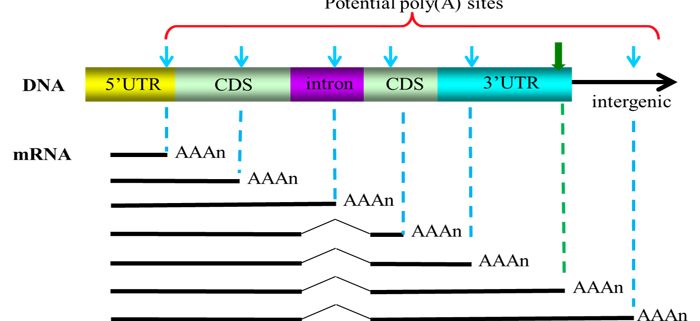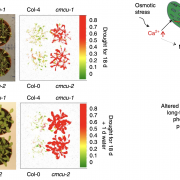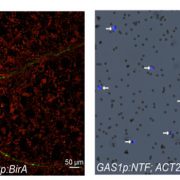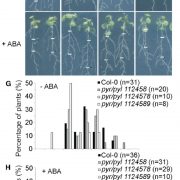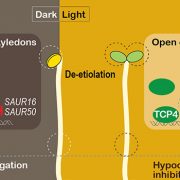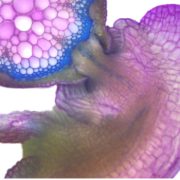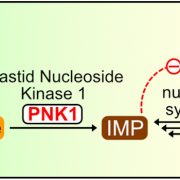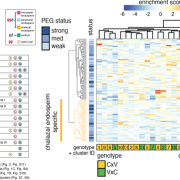The Pattern of Alternative Polyadenylation
Yu et al. study the function of FY in alternative polyadenylation. The Plant Cell (2019) https://doi.org/10.1105/tpc.18.00545
Zhibo Yu, Juncheng Lin, Qingshun Quinn Li
Background: Polyadenylation of eukaryotic messenger RNAs (mRNAs) involves the addition of a ‘tail’ of dozens to hundreds of adenosine (A) nucleotides to an mRNA. Polyadenylation requires poly(A) signal recognition, cleavage, and addition of the A nucleotides. At least 50% of genes in humans, animals, algae and plants have more than one cleavage site, a common phenomenon termed alternative polyadenylation (APA). APA increases the complexity and diversity of the different mRNAs and proteins produced in a cell and the choice of cleavage site is regulated during development and various environmental responses. During polyadenylation, poly(A) signal recognition key to the choice of cleavage site. In humans, the CPSF160-WDR33-CPSF30 complex recognizes the AAUAAA signal. However, the mechanism of poly(A) signal recognition in plants remains unclear. In addition, the function of the Arabidopsis flowering-time regulator FY in genome-wide APA remains unknown.
Question: Is Arabidopsis FY (like its mammalian homolog WDR33) involved in poly(A) signal recognition in plants? What are the functions of FY in genome-wide poly(A) site selection? What is the relationship between FY and AtCPSF30?
Findings: We found that over 50% of APA events were changed in fy single or fy Atcpsf30 double mutants, but mutation of the FY WD40-repeat has a stronger effect than deletion of the plant-unique PPLPP domain. FY mutations disrupt AAUAAA or AAUAAA-like poly(A) signal recognition. Notably, A-rich signal usage is suppressed in the WD40-repeat mutation, but promoted in PPLPP-domain deficiency. However, FY mutations do not aggravate the alteration of signal usage caused by a null mutant of AtCPSF30. Furthermore, the WD40-repeat mutation shows a preference for shortening of the 3’ untranslated region, but the PPLPP-domain deficiency shows a preference for lengthening. Interestingly, the WD40-repeat mutant has shortened primary roots and late flowering with alteration of the APA of related genes. Importantly, the long transcripts of two APA genes affected by fy mutations are related to abiotic stress responses. These results reveal a conserved and specific role of FY in mRNA polyadenylation.
Next steps: We would like to identify the sequences of the FY PPLPLL and WD40 domains that bind to the poly(A) signal. How are these recognitions regulated and their crosstalk with other development and environmental response pathways?
Zhibo Yu, Juncheng Lin, Qingshun Quinn Li. (2019). Transcriptome analyses of FY mutants reveal its role in mRNA alternative polyadenylation. https://doi.org/10.1105/tpc.18.00545
Key words: polyadenylation, flowering time, Arabidopsis


